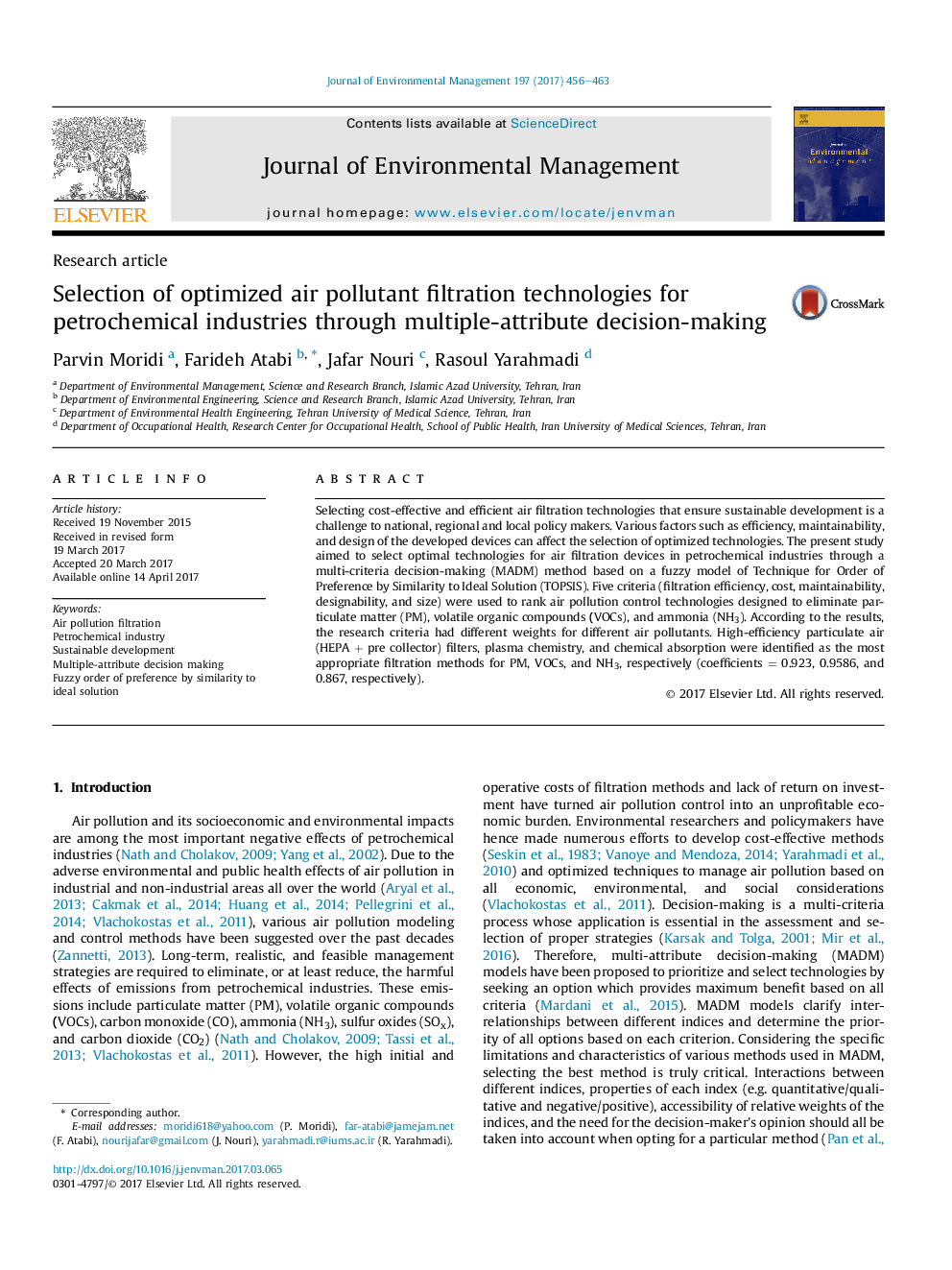| Article ID | Journal | Published Year | Pages | File Type |
|---|---|---|---|---|
| 5116971 | Journal of Environmental Management | 2017 | 8 Pages |
•F-TOPSIS method was used for optimized air filtration technologies selection.•By Shannon entropy with F-TOPSIS was identified priority of air filtration technology.•Air Filtration equipment was prioritized by technical and economic combined criteria.•Our integrated framework can guide policy makers for air pollution management.
Selecting cost-effective and efficient air filtration technologies that ensure sustainable development is a challenge to national, regional and local policy makers. Various factors such as efficiency, maintainability, and design of the developed devices can affect the selection of optimized technologies. The present study aimed to select optimal technologies for air filtration devices in petrochemical industries through a multi-criteria decision-making (MADM) method based on a fuzzy model of Technique for Order of Preference by Similarity to Ideal Solution (TOPSIS). Five criteria (filtration efficiency, cost, maintainability, designability, and size) were used to rank air pollution control technologies designed to eliminate particulate matter (PM), volatile organic compounds (VOCs), and ammonia (NH3). According to the results, the research criteria had different weights for different air pollutants. High-efficiency particulate air (HEPA + pre collector) filters, plasma chemistry, and chemical absorption were identified as the most appropriate filtration methods for PM, VOCs, and NH3, respectively (coefficients = 0.923, 0.9586, and 0.867, respectively).
